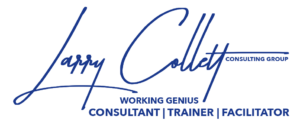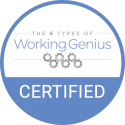Understanding the Concept of Working Genius
Exploring the Foundation of Working Genius
The concept of Working Genius revolves around identifying the innate talents and strengths of individuals within a team setting. By understanding the core abilities that each team member possesses, organizations can strategically allocate tasks and responsibilities for optimal performance.
Unveiling the Elements of Working Genius
The Working Genius model consists of six essential types: Wonder, Invention, Discernment, Galvanizing, Enablement, and Tenacity. Each type represents a unique set of skills and characteristics that contribute to the overall success of a team.
Implementing Working Genius in Team Dynamics
Integrating the Working Genius framework into team dynamics involves recognizing and appreciating the diverse strengths present among team members. By leveraging these inherent talents effectively, teams can enhance collaboration, innovation, and productivity.
Identifying the Six Key Types
Understanding the Core Working Genius Aspects
To establish a successful team dynamic, it is crucial to identify the core working genius aspects that each team member possesses. These aspects encompass six key types that are fundamental to achieving team success. By understanding and recognizing the strengths of each team member in these core areas, a team can work more effectively towards achieving their goals.
Recognizing Individual Team Member Strengths
Each team member is likely to excel in certain working genius types more than others. By recognizing and acknowledging these individual strengths, a team can leverage the unique abilities of each team member to optimize overall performance. This approach not only enhances teamwork but also fosters a sense of value and appreciation among team members.
Enhancing Team Collaboration through Working Genius
By harnessing the power of the six key working genius types, teams can improve collaboration and productivity. Encouraging team members to contribute their strengths in alignment with these types can lead to innovative solutions, effective problem-solving, and overall enhanced team performance. Embracing the diversity of working genius types within a team can create a well-rounded and dynamic team environment.
Exploring How Each Type Contributes to Team Dynamics
Identifying Strengths and Weaknesses
Each type brings unique strengths and weaknesses to the team dynamic. By understanding these attributes, team members can leverage their strengths and support each other in areas where they may be weaker. This awareness allows for more effective collaboration and ensures that all aspects of a project or task are covered.
Enhancing Communication and Collaboration
Recognizing how each type contributes to team dynamics also improves communication and collaboration. Team members can better appreciate the perspectives and contributions of others, leading to a more inclusive and efficient working environment. This understanding fosters a sense of unity and shared purpose among team members.
Creating a Balanced Team
By exploring how each type contributes to team dynamics, teams can build a more balanced and effective unit. By deliberately including individuals with different working geniuses, teams can avoid potential blind spots and ensure that all aspects of a project are well-addressed. This diversity of strengths leads to more innovative solutions and better outcomes for the team as a whole.
Implementing Strategies for Leveraging Working Genius
Developing Action Plans
Once you have identified the specific working geniuses within your team, it is crucial to develop action plans that leverage these strengths. This involves assigning tasks and responsibilities that align with each team member’s primary and secondary working geniuses. By doing so, you can ensure that everyone is operating in their areas of strength, maximizing productivity and efficiency.
Training and Skill Development
For team members whose working geniuses are not fully aligned with their current roles, providing training and skill development opportunities can be beneficial. This allows individuals to enhance their abilities in areas where they may be weaker, strengthening the overall team dynamic. By investing in continuous learning and development, you can enable team members to reach their full potential.
Regular Feedback and Evaluation
It is important to establish a culture of regular feedback and evaluation to monitor the effectiveness of your strategies for leveraging working genius. Through open communication and constructive feedback, you can identify areas for improvement and make necessary adjustments to optimize team performance. By continuously evaluating and refining your approach, you can ensure that your team is operating at its highest level of productivity and collaboration.
Maximizing Team Potential through Working Genius
Unlocking Team Strengths Through Working Genius
Building a successful team requires maximizing the unique potential and strengths of each team member. The Working Genius framework offers valuable insights into understanding and utilizing the different talents that individuals bring to the table. By recognizing and leveraging these inherent abilities, teams can achieve greater efficiency, collaboration, and overall success.
Fostering Collaboration and Innovation
One of the key benefits of applying the Working Genius model within a team setting is the promotion of collaboration and innovation. By identifying the specific working geniuses present in each team member, leaders can assign tasks and responsibilities that align with individual strengths. This approach not only enhances productivity but also fosters a dynamic environment where team members can work together harmoniously to generate new ideas and solutions.
Enhancing Communication and Team Dynamics
Effective communication is essential for any successful team, and understanding the working geniuses of team members can greatly enhance this aspect. By recognizing how each individual prefers to work and contribute, leaders can tailor their communication strategies to leverage these preferences. This personalized approach can lead to improved team dynamics, increased trust among team members, and ultimately, better overall outcomes.


